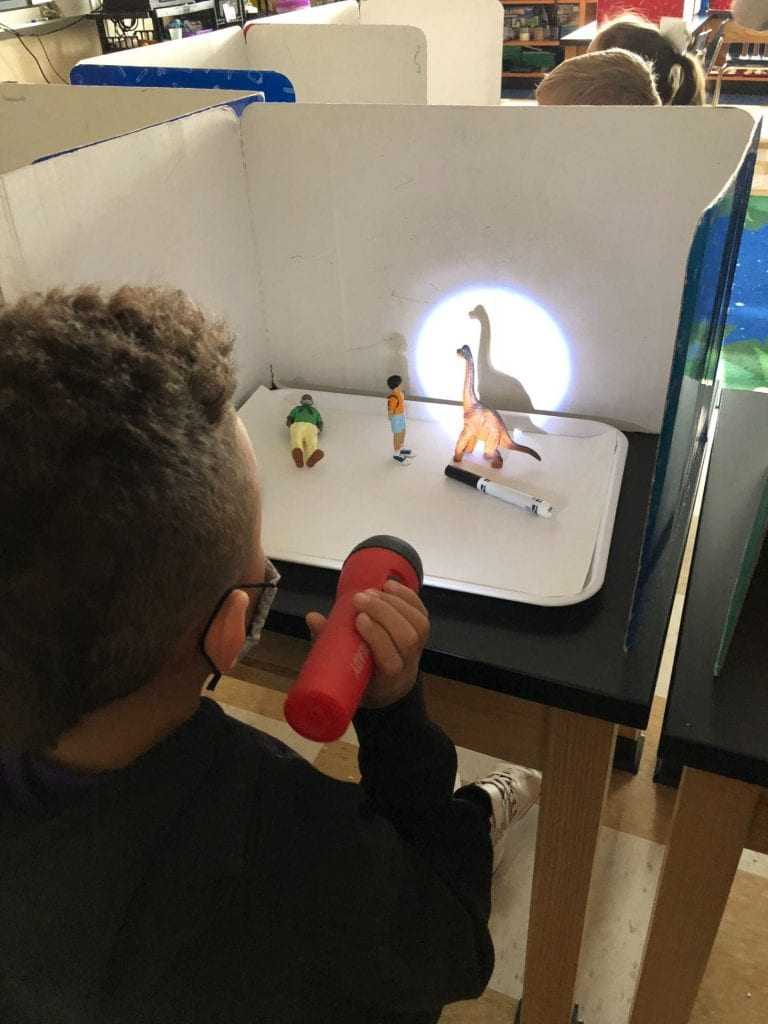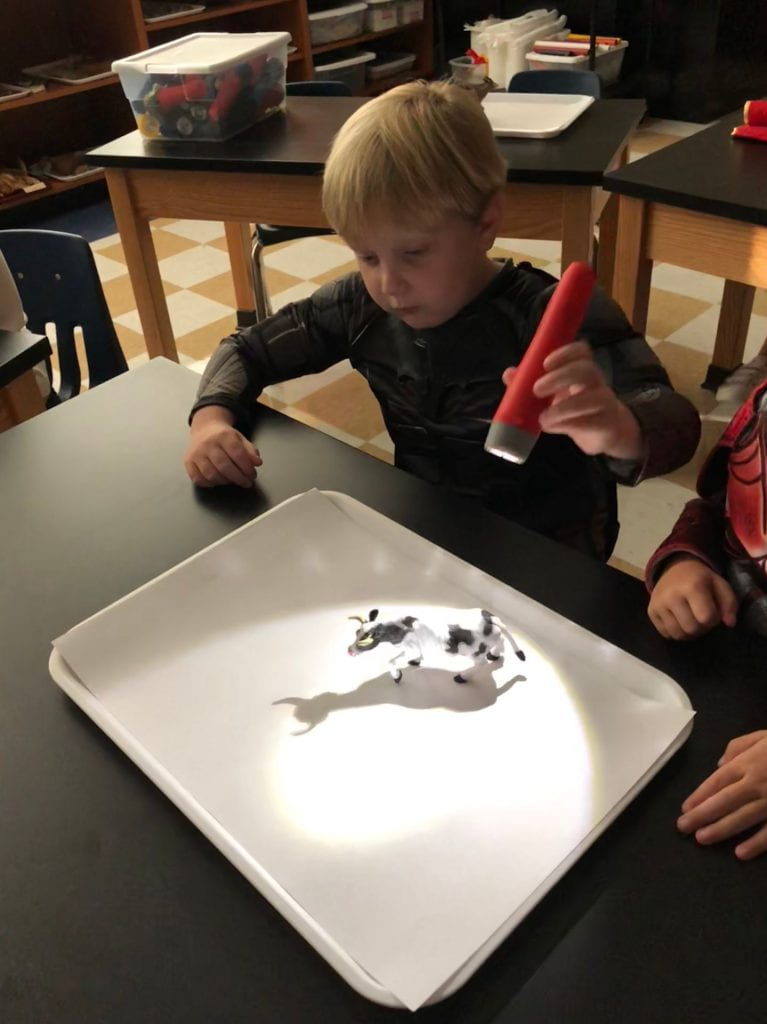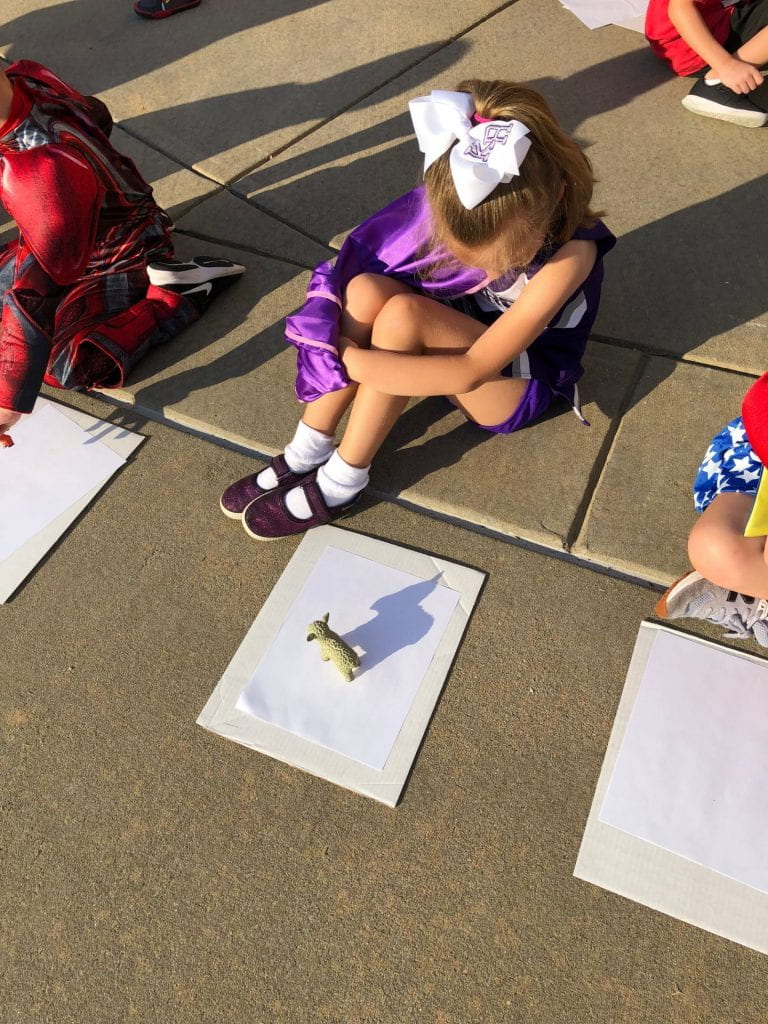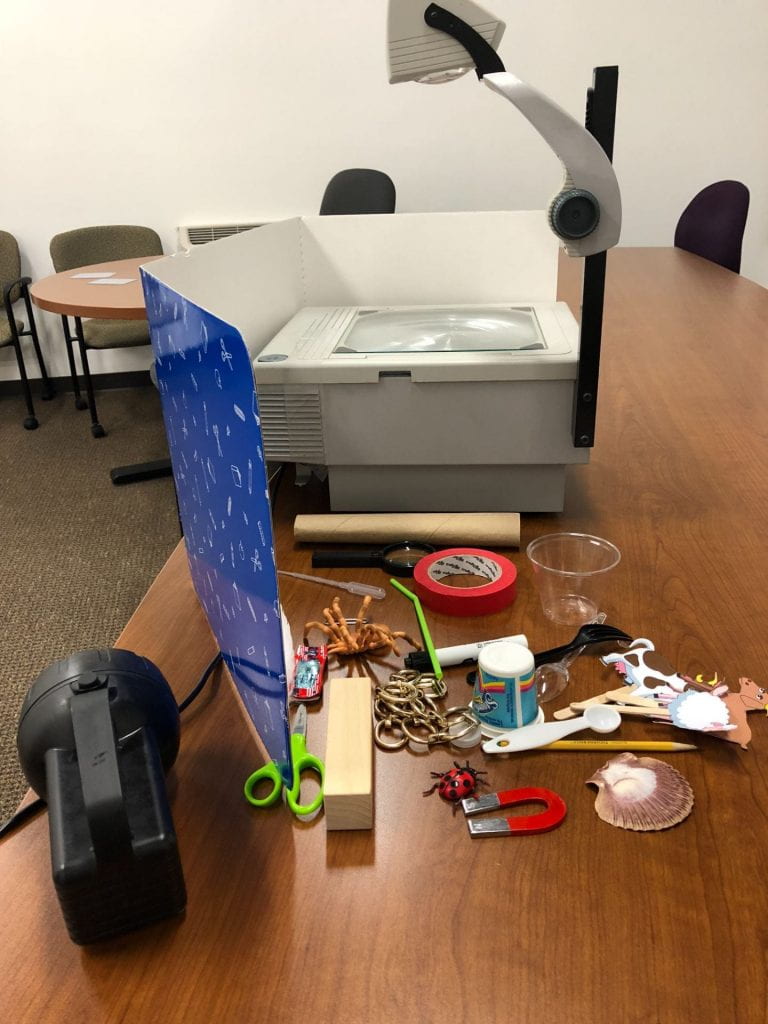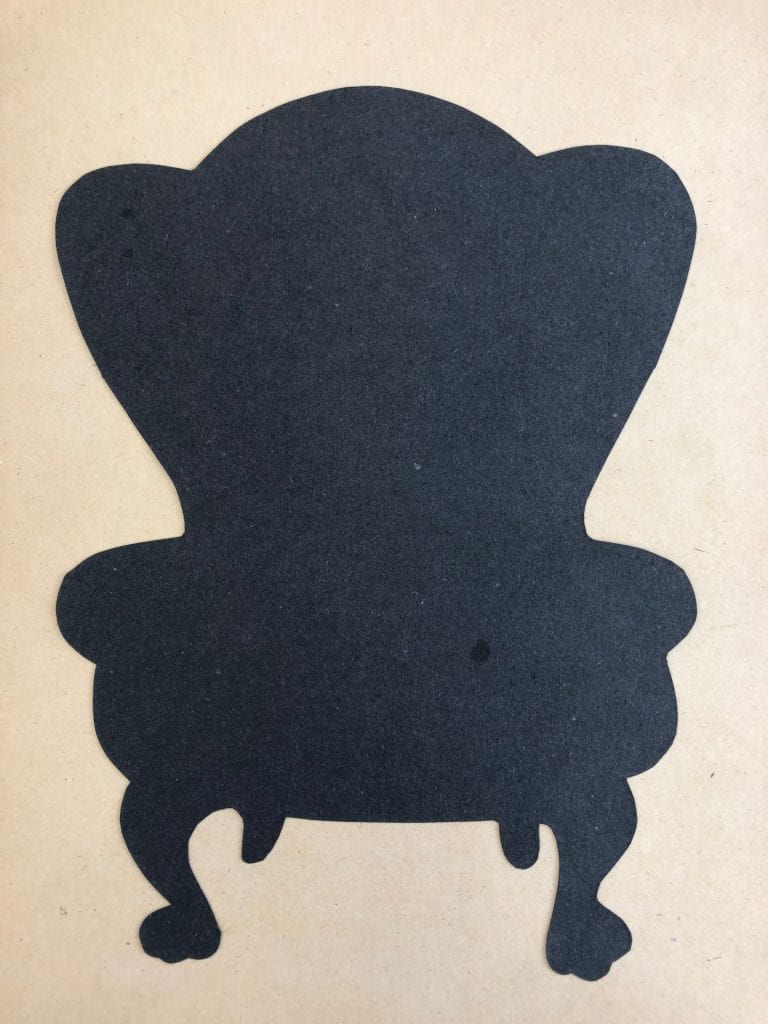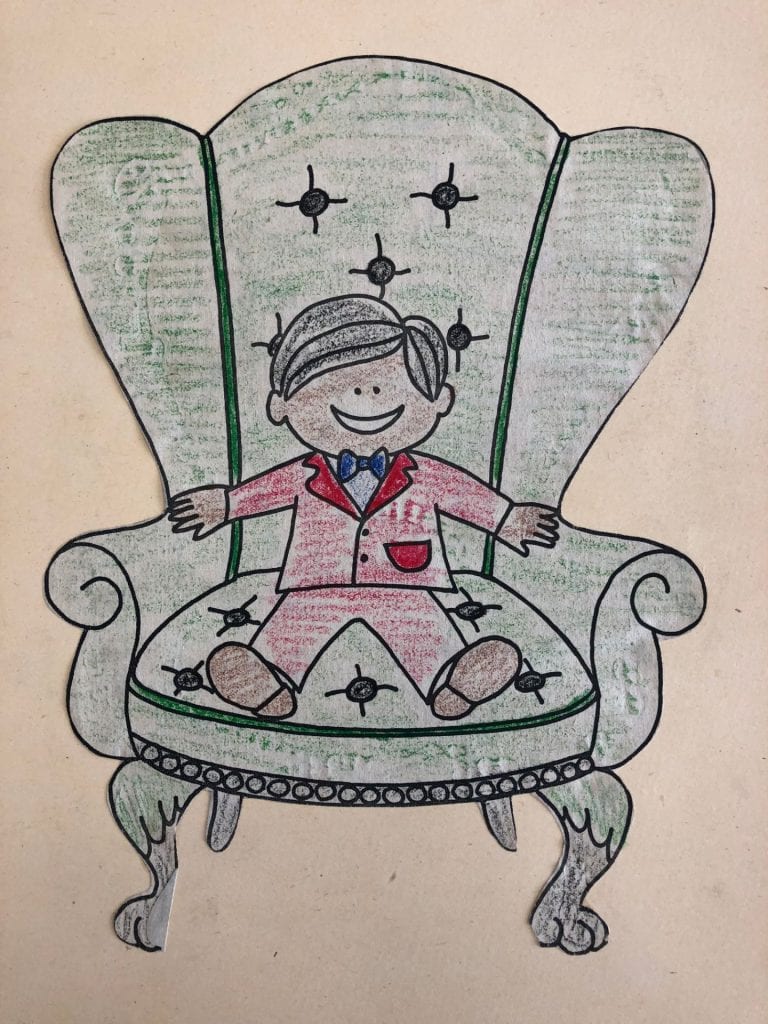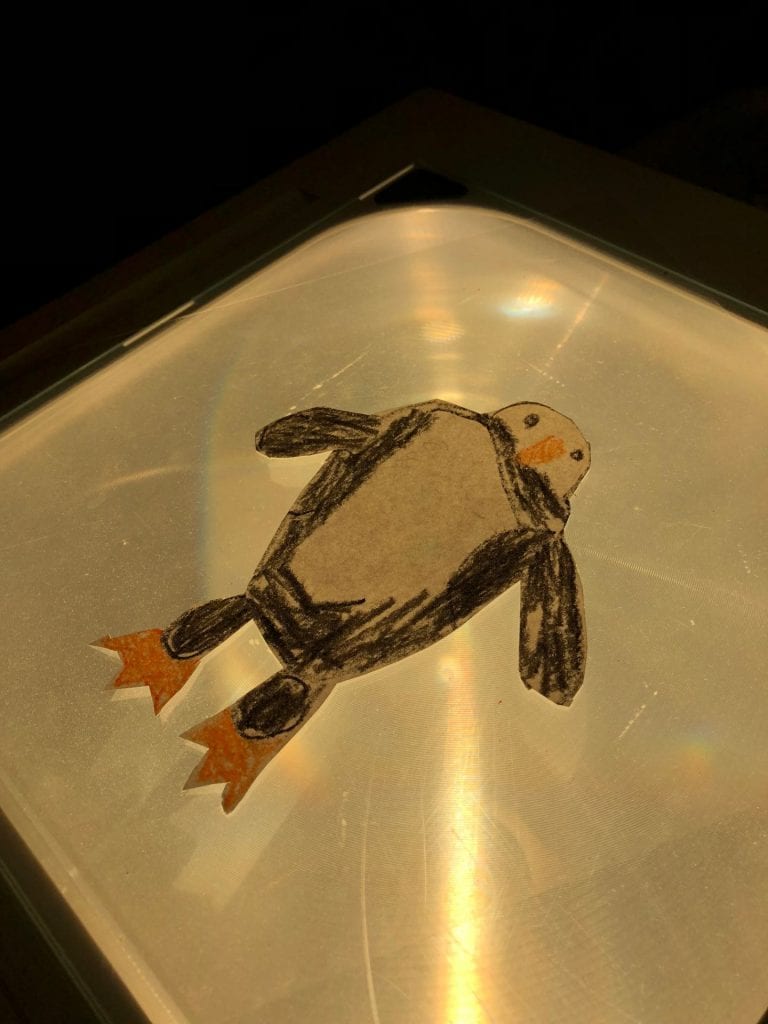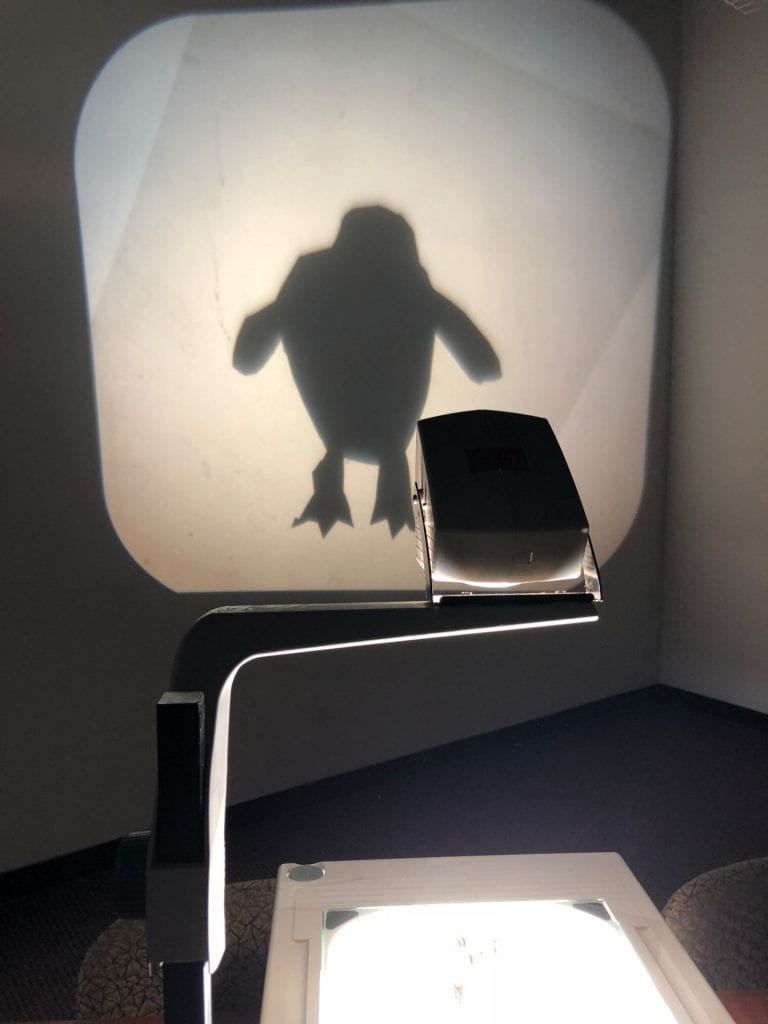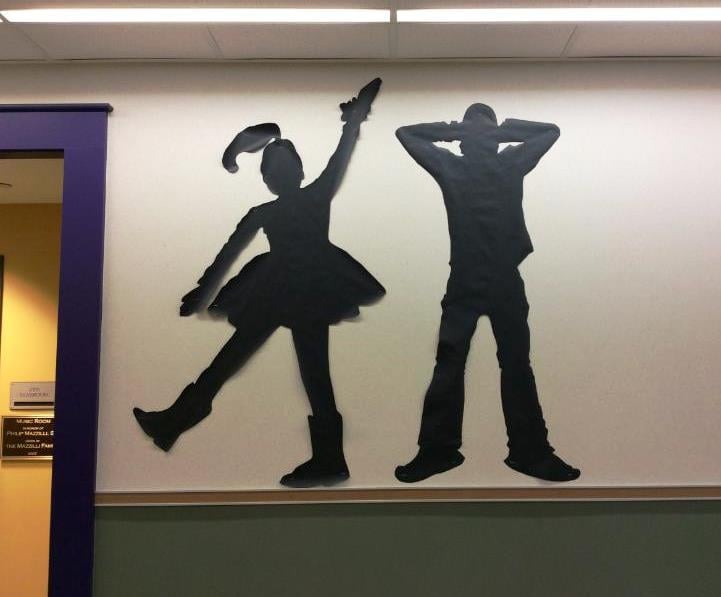Light and Shadows
Groundhog Day is the ideal time to investigate light and shadows! Below is a compilation of shadow investigations I previously completed with my students.
A shadow is formed when a natural or man-made light source blocks an opaque object. Shadows can move and change. Bringing a light source closer to an object will make its shadow grow larger while moving the light source away will make it smaller. Try changing the angle of the light source. Move the light from left to right (imitating the rising and setting of the sun) and note how the shadow changes. What does the shadow look like when the flashlight (sun) is directly overhead? What would you see if two light sources were directed toward an object?
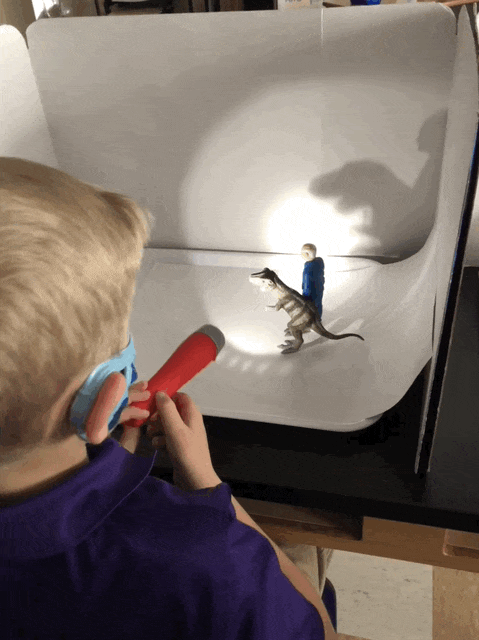
Bring a basket of items outside on a sunny day and place them on a white sheet of paper. Check back during the day and note how the shadow changes.
Hide objects from a child’s view and then project them onto the wall. Can your students identify what is creating the shadow? Turn the object on its side or stand it on its end. Does the shape of the shadow change? I used an old overhead projector to do this investigation, but you can also take the lampshade off a lamp.
Make a guessing game with cards. Place a picture on one side of the paper and its shadow on the back of the card. I made a collection of these in my early teaching days before we had copiers! I cut out pictures from coloring books.
Ask students to draw, color, and cut out an animal of their choosing while out of sight from classmates. Use clipboards to scatter your children around the room. While children are looking forward, place a light behind the animal and ask students to identify the animal from its shadow.
Form animals using hand shadows. Click here for the Safeshare link for the video below.

Did you notice the children’s silhouettes in the photos above? To capture children’s silhouettes, simply ask them to stand so that you can see their profiles on the wall. Take a photo of the silhouette, print it, or project it from your laptop and trace it. I remember trying to trace children’s silhouettes while they attempted to sit still! Another option is to trace around children, while they are lying down on bulletin board paper, with a white crayon. Display the opposite side, so lines aren’t visible.
Trace children’s shadows with chalk outside on sidewalks or a driveway periodically throughout the day. Measure the length of the shadows with measuring tape. Compare the differences.
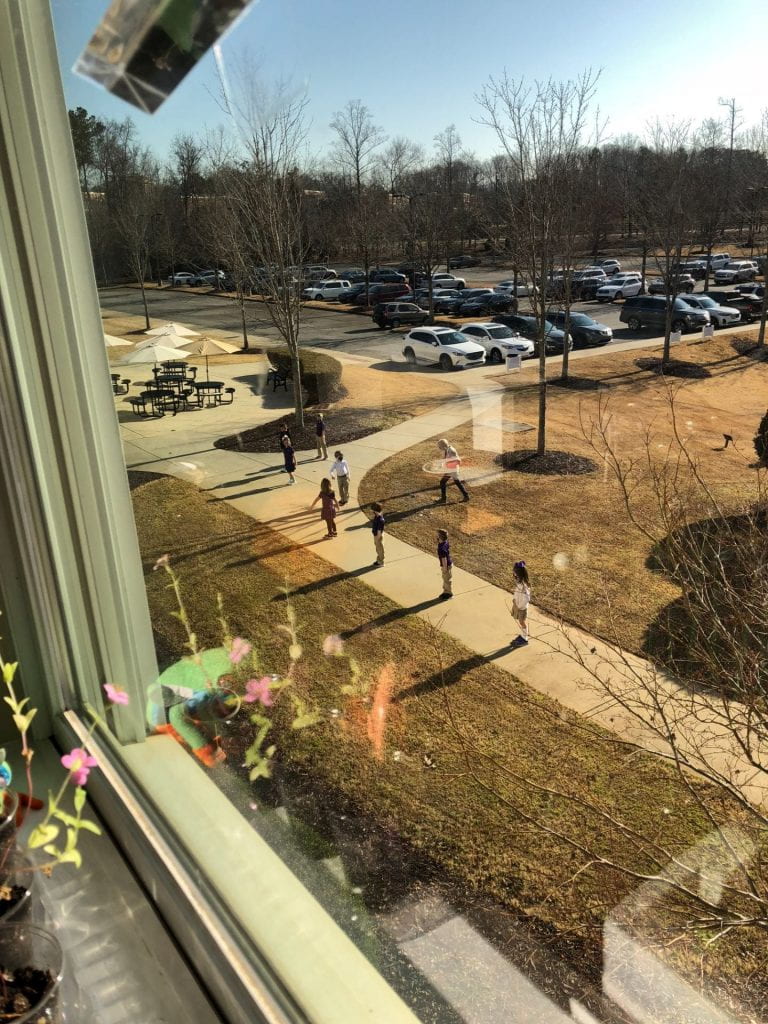
Play the classic game of shadow tag when you are outside. Another fun shadow game is the mirror game. Find a partner. One person is the shadow. The shadow copies his/her partner’s movements.
Children will discover that light can pass through some objects which will lead to an exploration of transparent, translucent, and opaque objects. Children tested to see how much light traveled through a collection of materials in the investigation below.
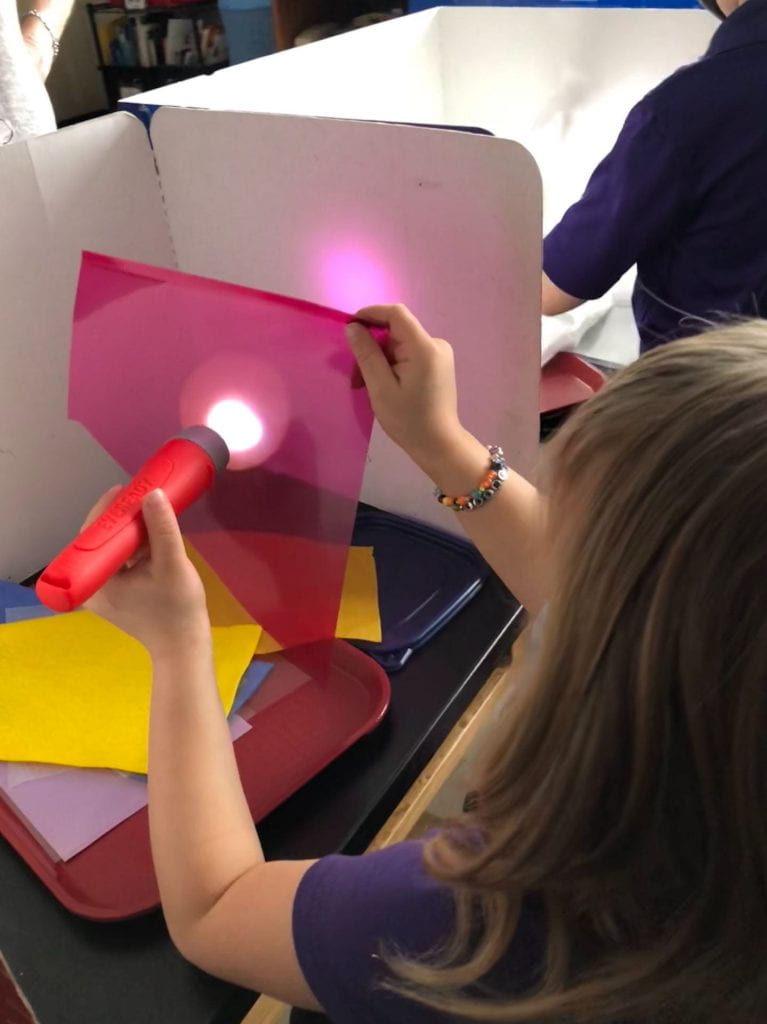
For videos about shadows, click here and here. Click here for a fun Sesame Street shadow song.
The light shines in the darkness, and the darkness has not overcome it. John 1:5
